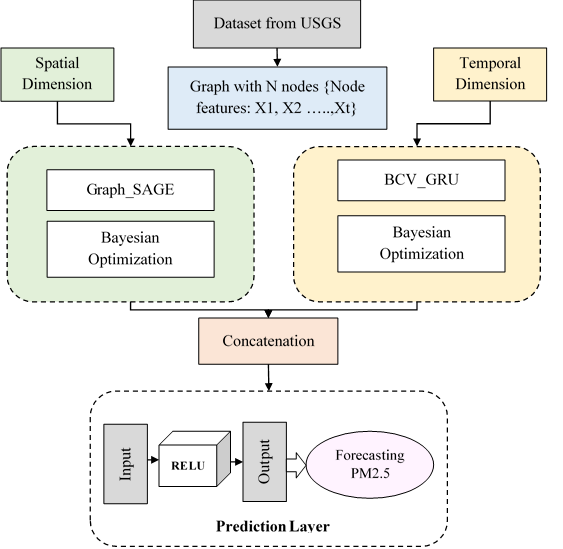
Environmental protection and the need for accurate pollutant forecasting have become increasingly important as worries about environmental issues and the harmful effects of pollution have grown. Predictive accuracy of air pollutants is generally unsatisfactory due to the fact that conventional methodologies prioritise time series analysis over the important spatial transmission dynamics among neighbouring locations. To address this inherent limitation, our proposed solution introduces an innovative Time Series Prediction Network, augmented by the auto-optimization capabilities of a Spatio-Temporal Graph-based Neural Network. This groundbreaking network comprises distinct spatial and temporal modules. The spatial module harnesses a Graph Sampling and Aggregation Network to extract essential spatial information from the data. Simultaneously, the temporal module integrates a Bayesian approach with a Complex Valued Graph Gated Recurrent Unit (BCV-GRU), seamlessly incorporating a graph network into the Gated Recurrent Unit (GRU) to capture temporal intricacies. Moreover, to manage the challenge of model inaccuracy stemming from inappropriate hyperparameters, Bayesian optimization was employed. The efficacy of our proposed method was validated using real PM2.5 data from the USGS website, showcasing a significant enhancement in prediction accuracy. This study puts forth a robust and effective approach for forecasting PM2.5 concentrations, bridging gaps in existing methodologies and contributing substantially to the evolution of environmental prediction models.
Total file downloads: 26